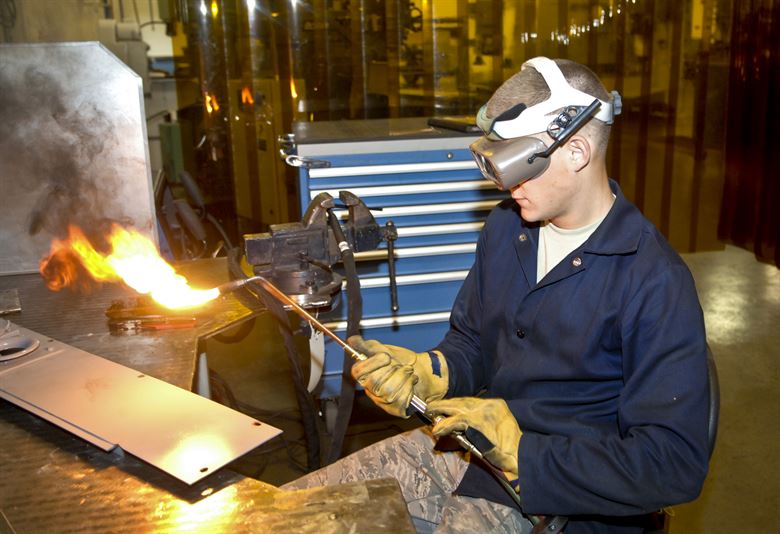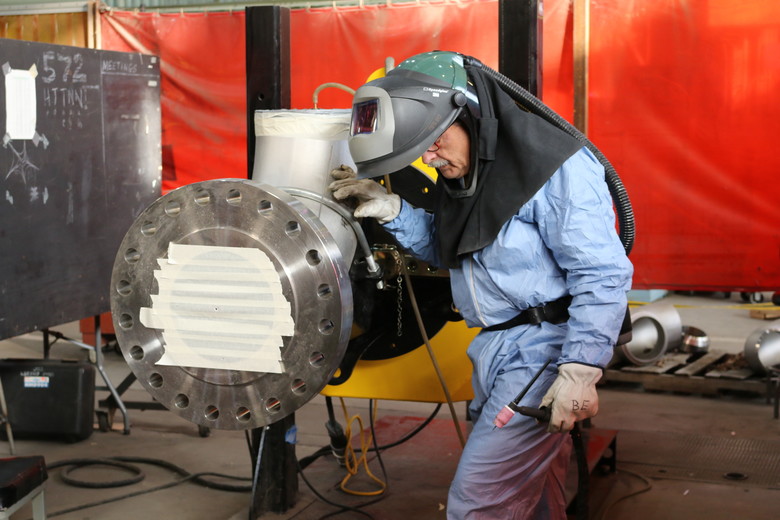Welding is a fun as well as professionally rich process which is done both by the hobbyists as well as technicians. The process involves a few tools, metals of different kind and some concentration and patience; you can be a welder and come up with any piece or shape you desire to make.
The process looks quite appealing for the thrill seekers, all the sparks flying around and something great is being made up. To know how the job is done you have to gain some basic knowledge and training. The basics include the knowledge that there are many different processes of welding which works by different technicalities.

Types of Welding Processes
To begin with, welding can be done in not less than 30 processes. There is the simple oxy-fuel process as well as high tech laser beam process for welding. But not all the 30 processes need to be learnt or take note of. The common and main four processes are MIG, TIG, Stick and Flux cored arc. All these processes have their own features, and they have some shortfalls as well as some brownie points of each. But one thing is common among them. All of the processes need some guidance and training before they are practiced.
MIG
Process-
This process can also be called gas metal arc welding (GMAW). This process needs an electrode which is being constantly fed through the welding gun. The operator has to pull the trigger to feed the consumable electrode. The electronic arc is formed between the base metal and the electrode and the material heats up until it reaches the melting point and then it joins the other part.
Requirement-
you need shielding gas supplied externally for this process. The gases commonly used for this purpose are stainless steel, carbon steel, magnesium, copper, nickel, silicone bronze and aluminium.
Advantage-
when you choose MIG style of welding, you ensure that the waste production is reduced. The higher electrode efficiency makes that happen. So the weld clean up is required at a minimum rate. The heat input is also less and the welding fume is reduced, apart from all these, this is a great process for the beginners as it is easy to learn.
Disadvantages-
you need external shielding gas in this process. Also best MIG welders come at a high cost. This process can be applied to only a few limited positions as for vertical and overhead heating this process is not right. Also thick materials cannot be welded through this process.
Usage- in automotive industry MIG welding is a popular process. This is a strong weld that can take in large forces and repairing can be done with versatility and strength with this process. Branding, robotics, construction and marine industry also use MIG welding process.

TIG
Process-
This process is also called Heliarc welding. This process uses non-consumable tungsten electrode that heed the base material and a molten pool is created in this method. No filler metal or autogenous weld is created by this process and thus two pieces of metal can be melted in this process together. If you want to create a weld bead you can add external filler into the molten pool and the mechanical properties of the metal will increase.
Requirement-
We need external gas supply like argon or argon/helium mixture.
Advantage-
This process is good for the enthusiasts DIY lovers as well as professionals. This process helps to weld thin metals and create high quality welds. Also aesthetic weld beads can be getting from this process. A variety of alloys and spatter free wells can be obtained from this process so do not worry much about the waste. High degree of purity can be obtained from this process.
Disadvantage-
High coasted equipments and low deposition rate are two shortcoming of this welding process. External shielding gas and deft operational skill is required to functionalize this process for best result.
Usage- the most common use of TIG welding system can be seen in piping system, aerospace welding, motorcycle or bikes. The industries that work with nonferrous metals use this process. Also repair and maintenance of different tools made of magnesium, copper, aluminium or stainless steel is done by this process.
Stick
Process-
This is the shielded metal arc welding process and it is commonly referred as stick. Electrode is used to carry the electric current soothe weld metal gets it. The electrode comes with a core wire which is coded influx. When the electric arc is created at the tip of electrode and is withdrawn to generate the temperature of 6500 degree Fahrenheit. The molten metal is free from nitrates or oxides and thus the outcome is perfect for pipeline welding, construction, steel erection or some heavy equipment repairing.
Requirement-
electrode is needed along with the core wire which will have the coded influx.
Advantage-
It needs low cost equipments, no shielding gas is required so you can use this process even in rain or winter. The technique can be applied to dirty or rusty metals where you cannot use TIG or MIG process.
Disadvantage-
This process includes lower consumable efficiency. Also lot of waste is produced. This process needs lots of time to get mastered in. also on thin metals it is hard to operate.
Usage-
This manual welding technique is necessary where TIG or MIG cannot be procured. Also in some cases the position, type of material and skill do not allow to operate TIG or MIG process and then only Stick process can only come handy. Especially shallow penetration, porosity, cracking or vulnerability due to severe weather let this technique to be allowed.
Flux Cored Arc Welding
Process- it is similar to MIG welding as it too needs the constant feeding of electrode, not by a solid wire but a tube shaped wire filled with flux.
Requirement-
There are two types of flux core wires, social good wire and double shield wire. Social good wire is perfect for outdoor use, as you can work with that in windy situation. Double shield wire works as external shield gas and guard the molten weld pool.
Advantage-
Higher electrode efficiency is used to create less waste. Also lower heat input is another feature of this process. No external shield gas is used so welding fume is also reduced. This is a clean welding method with least debris produced. This is also a process leant pretty easily.
Disadvantage –
Lots of smoke is generated and high cost equipments are needed in this process. Thin metals cannot be welded by this process and it creates slag.
Usage-
This is a favourite process of professionals as it is inexpensive. Instead of several limitations this process provides moderate output and is used on various fields.
Other than the above mentioned processes there are electron beam welding, atomic hydrogen welding, gas tungsten arc welding and plasma arc welding processes which are more or less used by the professionals and amateurs.
